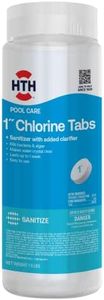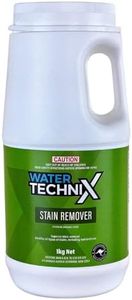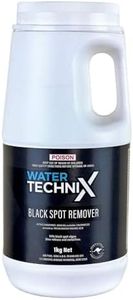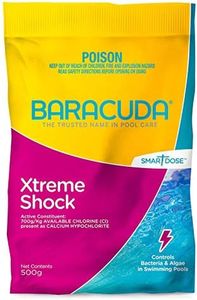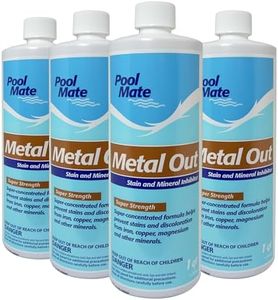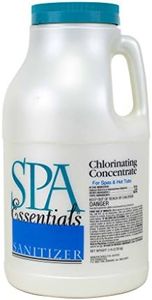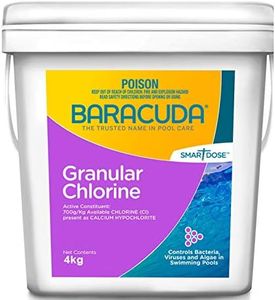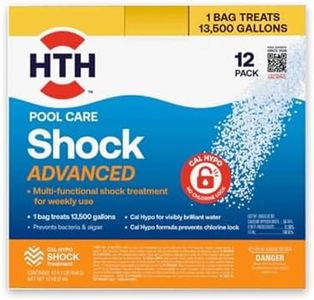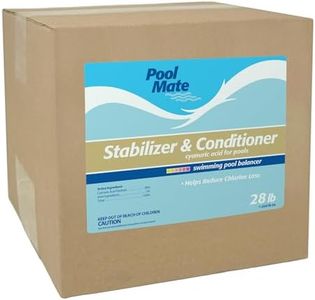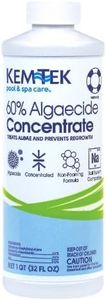We Use CookiesWe use cookies to enhance the security, performance,
functionality and for analytical and promotional activities. By continuing to browse this site you
are agreeing to our privacy policy
10 Best Pool Chemicals
From leading brands and best sellers available on the web.By clicking on a link to a third party's website, log data is shared with that third party.
Buying Guide for the Best Pool Chemicals
Keeping your pool water clean, safe, and clear is essential for enjoying your pool—and chemicals are a crucial part of pool maintenance. The right chemicals help prevent algae growth, kill bacteria, and balance the water, making it comfortable for swimming. When picking pool chemicals, it's important to understand what each type does, how they work together, and how your pool’s size and use influence your choices. Approaching your shopping with a basic understanding of these elements will help you keep your pool healthy and inviting.Sanitizer (Chlorine or Bromine)The sanitizer is the most important chemical for keeping your pool safe, as it kills bacteria and helps prevent waterborne illnesses. Chlorine is the most common, available in tablets, granules, or liquid, while bromine is an alternative that's gentler on the skin but typically more expensive. You'll often see chlorine measured in 'parts per million' (ppm); residential pools usually aim for about 1-3 ppm, while bromine pools might target slightly higher. If your pool gets heavy use or is in direct sunlight, you may need more sanitizer, so think about your pool’s location and how often you swim when picking the type and amount.
pH AdjusterspH measures how acidic or basic your pool water is. Keeping the pH in the right range (usually 7.2-7.8) is important because low pH can damage pool surfaces and equipment, while high pH makes chlorine less effective and can cause cloudy water. pH adjusters come in the form of increasers (often soda ash) and decreasers (like muriatic acid). You'll need to test your water regularly and adjust based on the results; if your area has 'hard' or alkaline water, you might need more decreaser, and vice versa.
Alkalinity AdjustersTotal alkalinity helps stabilize your pool's pH and prevent rapid changes. Alkalinity is typically kept between 80-120 ppm. If it’s too low, the pH can fluctuate easily; too high, and you might get cloudy water or scaling. Adjusters often use sodium bicarbonate (to raise) or sodium bisulfate (to lower). Pick these based on regular water tests—if your pool’s pH often swings up or down, focus on alkalinity stabilization.
AlgaecidesAlgaecides are chemicals designed to kill and prevent algae growth, which can turn water green or make surfaces slippery. Types include preventive (regular maintenance) and treatments (for existing outbreaks). If your pool is in the sun, surrounded by plants, or gets a lot of leaf debris, you might want to use a preventive algaecide weekly. For occasional issues, a treatment algaecide is best used when you first notice algae starting.
Shock Treatments (Oxidizers)Shocking your pool means adding a large dose of chlorine or a non-chlorine oxidizer to quickly destroy contaminants, like bacteria, chloramines (chlorine byproducts), or algae spores. Shocks can be chlorine-based or non-chlorine. Regular shocking (every 1-2 weeks or after heavy use) keeps water clear and odor-free. If swimmers complain of eye irritation or the water smells strongly of chlorine, it's time to shock.
Stabilizer (Cyanuric Acid)Stabilizer (cyanuric acid) helps keep chlorine from breaking down due to sunlight, extending its effectiveness. You want a stabilizer level around 30-50 ppm for most outdoor pools. If your pool loses chlorine quickly on sunny days, you might need to add more stabilizer, but too much can make chlorine less effective—so balance is key.
Calcium HardnessCalcium hardness measures the amount of dissolved calcium in your pool water. Too little calcium can cause water to leach minerals from pool surfaces (leading to damage), while too much can cause scaling and cloudy water. Target values are usually 200-400 ppm. If you have a plaster or concrete pool, watch this more closely than with a vinyl or fiberglass pool.
Clarifiers and FlocculantsClarifiers gather tiny particles so your filter can remove them, helping maintain sparkling clear water. Flocculants clump particles together so they fall to the pool bottom for easy vacuuming. Neither are everyday chemicals, but they’re useful if the water looks cloudy after a storm or heavy use. Choose them based on how stubborn your pool’s cloudiness is and the capabilities of your pool filter.
